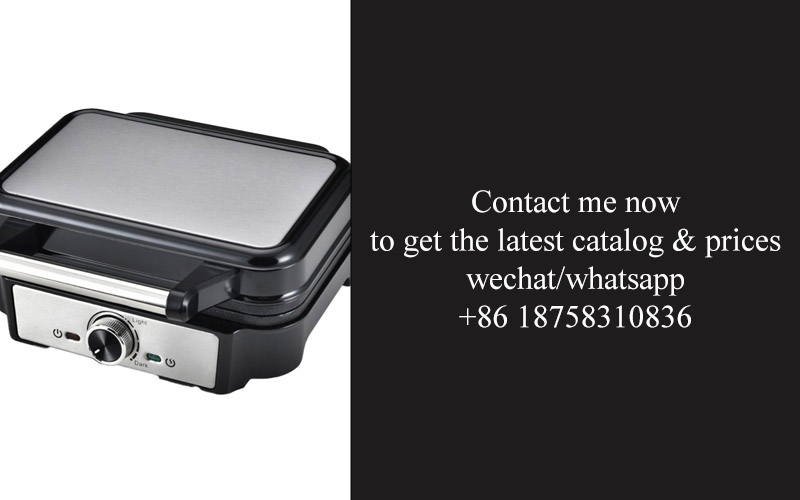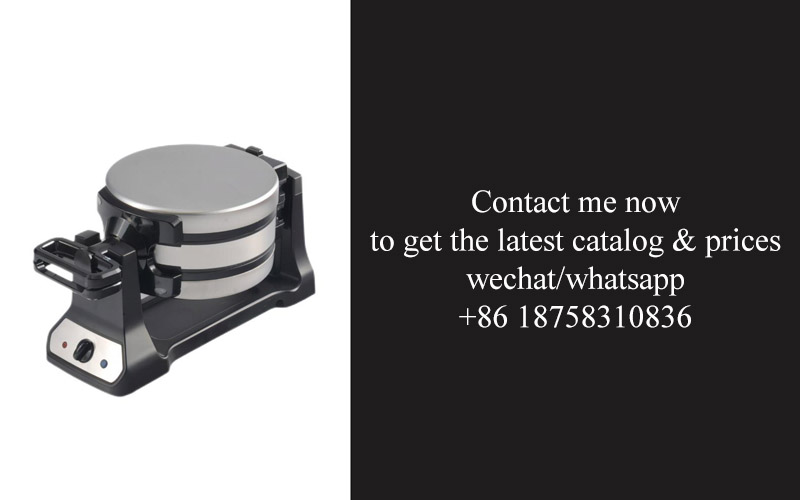Address
304 North Cardinal
St. Dorchester Center, MA 02124
Work Hours
Monday to Friday: 7AM - 7PM
Weekend: 10AM - 5PM
Address
304 North Cardinal
St. Dorchester Center, MA 02124
Work Hours
Monday to Friday: 7AM - 7PM
Weekend: 10AM - 5PM

In the ever-evolving world of grill manufacturing, the significance of innovation and precision cannot be overstated. As the demand for high-quality, durable, and uniquely designed grills grows, the role of in-house mold making has become a cornerstone of success for many manufacturers. This approach not only ensures that each grill is crafted to meet the highest standards but also offers a competitive edge in a market that values both functionality and aesthetics. Let’s delve into the transformative impact of in-house mold making on the grill industry.
In the ever-evolving landscape of the grill manufacturing industry, a significant shift has been observed in the way companies approach the production process. The emergence of in-house mold making has become a game-changer, offering numerous advantages that are reshaping the industry’s competitive landscape. This article delves into the reasons behind this rise and the transformative impact it has on grill manufacturing.
The demand for customized and high-quality grill products has surged, and with it, the need for precision in manufacturing processes. In-house mold making has stepped into the forefront, providing manufacturers with the flexibility to create intricate and unique designs that cater to the diverse preferences of consumers. This shift is not just a trend; it’s a strategic move that has become crucial for staying ahead in a highly competitive market.
One of the primary drivers behind the rise of in-house mold making is the ability to streamline the production cycle. Traditionally, manufacturers relied on external mold suppliers, which often led to delays and inefficiencies. By bringing mold making in-house, companies can now produce parts on-demand, reducing lead times and ensuring that production schedules are met without compromise.
Customization is another key factor. Grills come in various shapes, sizes, and features, and each model requires specific molds to achieve the desired design. With in-house mold making, manufacturers can quickly adapt to market demands and produce limited edition or specialized grill models without the need for external mold suppliers. This agility allows for a more responsive and customer-centric approach to product development.
Innovation is at the heart of the grill manufacturing industry, and in-house mold making has become a catalyst for creativity. Designers and engineers can experiment with new materials, shapes, and functionalities, knowing that the molds can be produced quickly and efficiently. This has led to the introduction of innovative grill features, such as advanced heat distribution systems, ergonomic handles, and sleeker aesthetics, which have set new standards in the market.
Quality control is also significantly enhanced through in-house mold making. When molds are produced in-house, manufacturers have greater oversight and can ensure that the molds meet the highest standards of precision and durability. This direct control over the mold-making process minimizes the risk of defects and ensures that every grill produced meets the company’s quality benchmarks.
Moreover, the cost-effectiveness of in-house mold making cannot be overstated. While setting up an in-house mold-making facility may require an initial investment, the long-term savings are substantial. By eliminating the costs associated with outsourcing, manufacturers can reduce production costs and pass those savings on to the consumer. This not only makes the products more affordable but also allows for more competitive pricing strategies.
The environmental impact of manufacturing processes is also a growing concern. In-house mold making can contribute to a more sustainable approach by reducing transportation emissions and waste. By keeping the entire production cycle under one roof, manufacturers can implement more efficient waste management systems and energy-saving practices.
Several grill manufacturers have already embraced in-house mold making and are reaping the benefits. For instance, Company X, a leader in the grill industry, has seen a remarkable increase in customer satisfaction and market share since implementing this strategy. Their ability to produce a wide range of grill models with unique features has set them apart from competitors.
Despite the numerous advantages, challenges remain. The technical expertise required to operate an in-house mold-making facility is substantial, and manufacturers must invest in training and equipment. Additionally, the initial setup costs can be prohibitive for smaller companies. However, with careful planning and strategic investments, these challenges can be overcome.
In conclusion, the rise of in-house mold making in grill manufacturing is a testament to the industry’s commitment to innovation, efficiency, and quality. As the market continues to evolve, companies that invest in this capability will be well-positioned to meet the demands of a discerning consumer base. The future of grill manufacturing looks bright, with in-house mold making playing a pivotal role in shaping the industry’s trajectory.

Custom molded parts have become an integral component in the grill manufacturing industry, playing a pivotal role in the evolution of this sector. These specialized parts are not just components; they are the architects of innovation and functionality. Here’s why they hold such significance:
In the competitive landscape of grill manufacturing, the quest for differentiation is relentless. Custom molded parts offer manufacturers the unique ability to create distinct designs that set their products apart from the competition. Whether it’s a sleek, modern look or a rugged, outdoor aesthetic, these parts can be tailored to meet the exact specifications of a brand’s identity.
The precision and consistency of custom molded parts are unmatched. They are crafted to exacting tolerances, ensuring that every grill that rolls off the assembly line meets the highest standards of quality. This level of detail is crucial in the grill industry, where the durability and reliability of the product are paramount to customer satisfaction.
When it comes to materials, custom molded parts offer a wide array of options. From high-grade plastics to durable metals, these parts can be made from materials that not only enhance the performance of the grill but also contribute to its overall longevity. This versatility allows manufacturers to innovate in ways that were once impossible, leading to advancements in heat resistance, corrosion prevention, and ease of maintenance.
The integration of custom molded parts into the manufacturing process also brings efficiency gains. By eliminating the need for multiple assembly steps, these parts can streamline production lines, reducing labor costs and decreasing the time it takes to bring a product to market. This efficiency is especially valuable in a fast-paced industry where time-to-market is a critical factor.
In the realm of functionality, custom molded parts can incorporate intricate designs that enhance the user experience. From ergonomic handles to innovative venting systems, these parts can be designed to not only look good but also to improve the usability of the grill. This focus on user experience is key in attracting consumers who are looking for both style and substance.
Moreover, the ability to mold complex shapes and geometries into a single part eliminates the need for multiple components. This reduction in the number of parts not only simplifies assembly but also reduces the likelihood of parts failing due to wear and tear. A grill with fewer parts is not only easier to maintain but also less likely to suffer from design flaws that could compromise its performance.
In terms of sustainability, custom molded parts can be designed with environmental considerations in mind. By using biodegradable materials or recycled plastics, manufacturers can produce grills that are not only high-performing but also eco-friendly. This commitment to sustainability can be a powerful selling point for consumers who are increasingly conscious of their environmental impact.
The customization of molded parts also allows for the integration of smart features. With advancements in technology, manufacturers can incorporate sensors, heating elements, and connectivity options directly into the molded parts. This not only enhances the grill’s functionality but also positions the product as a cutting-edge innovation in the market.
In the end, the importance of custom molded parts in grill manufacturing cannot be overstated. They are the cornerstone of innovation, driving the development of new designs, improving functionality, and ensuring quality and efficiency. As the grill industry continues to evolve, these parts will undoubtedly play an even more significant role in shaping the future of outdoor cooking.

In the realm of grill manufacturing, innovation is the cornerstone of progress. The design of a grill is not just about aesthetics; it’s a symphony of form and function that can elevate the cooking experience. Here’s how innovative design and enhanced functionality are shaping the future of grill manufacturing:
Grills have evolved from simple cooking surfaces to sophisticated appliances that cater to a variety of culinary needs. Modern grills are not just for burgers and hot dogs; they are now equipped to handle everything from delicate seafood to hearty steaks. The key to this versatility lies in the design of custom molded parts that allow for diverse cooking methods and accessories.
One such innovation is the integrated smoking chamber. By incorporating a custom-molded part that seamlessly fits into the grill’s structure, manufacturers can offer a dual-purpose cooking surface. This not only saves space but also provides users with the ability to smoke meats without the need for an additional smoker. The precision of the mold ensures that the smoking chamber is airtight, maintaining the perfect temperature for slow and low cooking.
The design of grill grates has also seen a revolution. Custom molded grates with unique patterns and materials not only enhance the aesthetic appeal but also improve the cooking experience. For instance, a grate with a textured surface can prevent food from sticking while also allowing for better heat distribution. The ability to create intricate patterns and shapes through in-house mold making allows manufacturers to push the boundaries of traditional grill design.
One of the most significant advancements in grill functionality is the integration of smart technology. Custom molded parts are now being used to house digital interfaces, LED lighting, and even Bluetooth connectivity. These features not only make grilling more convenient but also more interactive. Users can now monitor their grill’s temperature and cooking time from their smartphones, ensuring that every meal is cooked to perfection.
Safety is another area where innovative design has made a significant impact. Custom molded parts are being used to create childproof latches and heat-resistant handles. These features not only protect users from accidents but also extend the lifespan of the grill by preventing damage from prolonged exposure to high temperatures.
In terms of environmental sustainability, the use of custom molded parts has allowed for the creation of grills that are more energy-efficient. By reducing the weight of the grill and streamlining its design, manufacturers can reduce the energy required for cooking. Additionally, the use of eco-friendly materials in the molding process is becoming more prevalent, contributing to a greener manufacturing process.
Functionality also extends to the ease of maintenance. Custom molded parts can be designed with seamless joins and removable components, making cleaning and maintenance a breeze. The ability to create intricate designs without sacrificing structural integrity means that grills can be both beautiful and practical.
Another area where design and functionality intersect is in the world of portable grills. Custom molds allow for the creation of lightweight, yet durable, parts that make it possible to enjoy the convenience of grilling anywhere. From compact grills that fit in the trunk of a car to portable smokers that can be carried on a backpacking trip, the possibilities are endless.
Lastly, the use of custom molded parts has opened up new avenues for customization. Consumers can now choose from a variety of finishes, colors, and even personalized designs for their grills. This level of personalization not only satisfies the desire for uniqueness but also adds a touch of personal flair to the cooking space.
In summary, the fusion of innovative design and enhanced functionality in grill manufacturing is reshaping the industry. By leveraging the precision and creativity of custom molding, manufacturers are able to create grills that not only look great but also deliver an unparalleled cooking experience. The future of grilling is bright, and it’s being driven by the ingenuity of custom molded parts.

In-house mold making has become a cornerstone for grill manufacturers, offering a myriad of benefits that can significantly impact the quality, efficiency, and marketability of their products. Here are some of the key advantages:
The ability to create custom molds in-house means that grill manufacturers can tailor the design and specifications of their grill components to their exact needs. This customization allows for the integration of innovative features that might not be possible with off-the-shelf molds. From unique handle designs to precision-fitted parts that enhance durability, in-house mold making opens up a world of possibilities.
Reduced lead times are a significant advantage of in-house mold making. When manufacturers rely on external mold makers, they often face delays due to shipping, communication, and production bottlenecks. By having their own mold-making capabilities, grill manufacturers can create new molds or modify existing ones on the spot, leading to quicker product development and time-to-market.
Cost savings can be substantial when it comes to in-house mold making. While the initial investment in mold-making equipment can be significant, over time, it pays off. By reducing the need for outsourced mold making, companies can cut down on the costs associated with external mold suppliers. This includes not only the cost of the mold itself but also any additional fees for design changes or rush orders.
Quality control is paramount in the grill manufacturing industry, and in-house mold making plays a crucial role in maintaining high standards. With in-house capabilities, manufacturers have complete control over the mold-making process, from design to production. This ensures that the molds are created with precision and that the parts they produce meet the exact specifications, reducing the likelihood of defects and improving the overall quality of the grill.
Innovation is fostered within the walls of companies that invest in in-house mold making. The ability to quickly prototype and test new designs allows for continuous improvement. Grill manufacturers can experiment with different materials, shapes, and sizes without the constraints of waiting for external mold makers. This agility can lead to breakthroughs in grill design and functionality, keeping the brand at the forefront of market trends.
Collaboration between designers, engineers, and production teams is streamlined with in-house mold making. When everyone is involved in the mold-making process, there is a greater sense of ownership and commitment to the final product. This cross-functional collaboration can lead to more creative and functional grill designs, as each team member brings their unique perspective and expertise to the table.
Custom molded parts often require less material due to their precise fit and design. This not only reduces waste but also contributes to a more sustainable manufacturing process. By minimizing the amount of material used, grill manufacturers can also reduce their environmental footprint and appeal to consumers who are increasingly conscious of sustainability.
Flexibility is a game-changer for grill manufacturers. In-house mold making allows for the quick production of limited-edition or seasonal grill models. This flexibility enables companies to respond swiftly to market demands, consumer trends, or even unforeseen product recalls, without the constraints of external suppliers.
The competitive advantage is clear when grill manufacturers have the capability to produce custom molded parts in-house. By controlling the entire supply chain, from design to finished product, companies can ensure that their grills are not only high-quality but also unique. This differentiation can help brands stand out in a crowded market, attracting loyal customers who appreciate the craftsmanship and attention to detail.
In conclusion, the benefits of in-house mold making for grill manufacturers are multifaceted. From design innovation and cost savings to enhanced quality control and market responsiveness, the advantages are compelling. As the grill industry continues to evolve, those companies that embrace in-house mold making are well-positioned to lead the way in product excellence and customer satisfaction.

In the competitive world of grill manufacturing, several companies have turned to in-house mold making to drive innovation and efficiency. Here are a few success stories that highlight the impact of this strategic move:
Story 1: The Customized Grilling ExperienceA mid-sized grill manufacturer faced the challenge of offering a unique grilling experience to their customers. By investing in in-house mold making, they were able to create custom molds for their grill components. This allowed them to introduce a line of grills with innovative designs, such as ergonomically shaped handles and unique grill surfaces that enhanced heat distribution. The result was a product that not only looked different but also performed better, leading to increased customer satisfaction and a boost in sales.
Story 2: Streamlining Production with PrecisionA large grill manufacturer was struggling with the inconsistencies in the quality of their grill parts due to reliance on external mold suppliers. By bringing mold making in-house, they gained complete control over the production process. This shift allowed them to fine-tune their molds for precision and consistency, reducing defects and reworks. The improved quality of the grill parts directly translated to a higher quality final product, which won them several industry awards and a reputation for excellence.
Story 3: Quick Turnarounds and Cost SavingsA startup grill company needed to bring their product to market quickly to stay ahead of the competition. With limited resources, they decided to invest in in-house mold making. This decision paid off as they were able to design and produce their grill components on-site, significantly reducing lead times. The ability to iterate and test new designs rapidly was invaluable, and the cost savings from not having to outsource mold making were substantial, allowing the company to allocate more funds to marketing and product development.
Story 4: Customization for Niche MarketsA specialized grill manufacturer focused on catering to outdoor enthusiasts and gourmet chefs. By developing in-house mold capabilities, they were able to create a range of grill parts tailored to specific needs, such as adjustable cooking grids and high-temperature-resistant components. This level of customization opened up new markets and opportunities, as they could now offer solutions that no other competitor could match.
Story 5: Enhancing Brand IdentityAn established grill brand was looking to revitalize its image and stand out in a crowded market. By creating unique grill parts through in-house mold making, they were able to develop a distinctive brand identity. The custom designs not only set their products apart but also reinforced the brand’s commitment to quality and innovation. This strategic move helped them attract new customers and retain loyal ones, leading to a significant increase in market share.
Story 6: Flexibility in Design and Material SelectionA grill manufacturer that often worked with new materials and designs found that in-house mold making gave them the flexibility to experiment without the constraints of external suppliers. This led to the creation of grills that were not only more durable but also aesthetically pleasing. The ability to quickly prototype and test new materials meant they could respond to market trends and customer feedback more effectively.
Story 7: Reducing Dependency on External SuppliersSeveral grill manufacturers have reported that moving to in-house mold making has reduced their dependency on external suppliers. This shift has minimized supply chain risks and allowed them to maintain a consistent level of quality control. The control over the production process also means they can respond to production issues immediately, ensuring minimal downtime.
Story 8: Long-Term Strategic InvestmentFor some grill manufacturers, in-house mold making has been a long-term strategic investment. By building a dedicated mold making team and investing in advanced equipment, they have positioned themselves as leaders in the industry. This strategic foresight has not only led to short-term gains but has also secured their position for future growth and innovation.
These case studies illustrate the diverse ways in which in-house mold making can benefit grill manufacturers. From enhancing product quality and design to reducing costs and increasing market competitiveness, the advantages are clear. As the grill industry continues to evolve, companies that embrace in-house mold making are well-positioned to lead the way.

Navigating the complexities of in-house mold making can be daunting, but for grill manufacturers, it often proves to be a game-changer. Here are some of the challenges faced and the innovative solutions that have turned them into opportunities for success.
The Precision Paradox: Achieving the Right BalanceManufacturers often find themselves caught in a paradox—striving for precision in mold making without compromising on speed and cost. The challenge lies in ensuring that the molds are not only accurate but also durable enough to withstand the high temperatures and stresses of grill production. Solutions come in the form of advanced CAD/CAM software that allows for intricate designs and real-time adjustments, ensuring that every mold is a perfect fit for its intended use.
Material Mastery: Selecting the Right ResinChoosing the right material for mold making is critical. Different types of grills require different properties from their molds, such as heat resistance, flexibility, and strength. For instance, high-heat grills demand molds made from materials like PEEK or PPS, which can withstand extreme temperatures. Solutions involve extensive research and testing to identify the optimal material that balances performance with cost-effectiveness.
Cost Containment: Balancing Quality with BudgetsThe cost of mold making can be a significant portion of the overall production budget. Grill manufacturers must find ways to reduce costs without sacrificing quality. One solution is to invest in efficient mold design and manufacturing processes that reduce waste and minimize the need for reworks. Additionally, adopting modular mold designs allows for easier adjustments and replacements, saving time and money in the long run.
Skill Shortage: Attracting and Retaining TalentThe mold-making industry faces a challenge in attracting and retaining skilled technicians. Grill manufacturers must compete with other sectors for top talent, which can drive up labor costs. A solution is to invest in training programs that not only develop existing employees but also attract new talent by offering a clear career path within the company. By fostering a culture of continuous learning, manufacturers can build a skilled workforce that can tackle the most complex mold-making challenges.
Quality Control: Ensuring Consistency Across ProductionMaintaining consistent quality in mold making is crucial, especially in large-scale grill production. The challenge is to ensure that each mold performs consistently over time. Solutions include implementing rigorous quality control checks at every stage of the mold-making process, from design to final inspection. Using automated testing equipment can also help identify potential issues early, preventing costly mistakes down the line.
Innovation Overload: Keeping Up with Technological AdvancementsThe mold-making industry is constantly evolving with new technologies and materials. Grill manufacturers must stay abreast of these advancements to remain competitive. The challenge is to avoid being overwhelmed by the sheer volume of new innovations. A solution is to establish a dedicated R&D team that can sift through the latest developments and identify those that offer the most significant benefits for their specific needs. This approach ensures that investments in new technologies are strategic and impactful.
Supply Chain Disruptions: Mitigating Risks and Ensuring ContinuitySupply chain disruptions can be a major challenge for grill manufacturers, particularly when it comes to mold making. The global nature of the supply chain means that any disruption can have a ripple effect on production. Solutions involve diversifying suppliers and maintaining strong relationships with key partners. By having multiple sources for critical materials and components, manufacturers can reduce their reliance on a single supplier and mitigate the risk of production delays.
Environmental Concerns: Sustainable Practices in Mold MakingWith growing environmental concerns, grill manufacturers are under pressure to adopt sustainable practices in their mold-making operations. The challenge is to balance environmental responsibility with cost and efficiency. Solutions include investing in eco-friendly materials and processes, such as biodegradable resins and energy-efficient manufacturing equipment. By integrating sustainability into their operations, manufacturers can appeal to eco-conscious consumers and contribute to a greener future.
In conclusion, the challenges in in-house mold making for grill manufacturers are numerous, but so are the solutions. By focusing on precision, material selection, cost containment, talent development, quality control, innovation management, supply chain resilience, and sustainability, these manufacturers can overcome obstacles and continue to drive innovation in the grill industry.

Navigating the complexities of in-house mold making can significantly impact the cost efficiency and quality control of grill manufacturers. This section delves into the various aspects of this impact, showcasing both the challenges and the strategies to overcome them.
Grill manufacturers often find that the cost efficiency of in-house mold making is a double-edged sword. While it allows for quick turnaround and reduced dependency on external suppliers, the initial investment in mold equipment can be substantial. The cost of purchasing or leasing high-quality molds, along with the necessary machinery, is a significant upfront expense. However, this investment can pay off over time through the elimination of tooling costs and the ability to customize products to meet specific market demands.
The reduction in tooling costs is particularly beneficial for smaller manufacturers or startups. Outsourcing mold making can be an expensive endeavor, with costs tied to the complexity of the mold and the number of parts it will produce. By bringing mold making in-house, these businesses can avoid these third-party fees, potentially freeing up capital that can be reinvested into other areas of their operation.
Yet, the cost savings don’t stop there. In-house mold making also allows for better cost control throughout the production process. Companies can closely monitor and manage the quality and production time of their molds, ensuring that the cost of mold changes or repairs is contained. This level of control is not always achievable when relying on external mold makers.
On the quality control front, in-house mold making has proven to be transformative. The ability to maintain strict oversight over the mold-making process means that manufacturers can identify and correct issues early on. This proactive approach to quality ensures that the final product meets the highest standards, reducing the likelihood of defective products reaching the consumer.
However, maintaining quality control in-house can be challenging. Molds require regular maintenance and calibration to ensure they continue to produce parts to spec. The precision and accuracy of these molds are critical, and any discrepancies can lead to subpar products. This necessitates a skilled workforce with expertise in mold design, maintenance, and repair.
In some cases, manufacturers might face the challenge of mold wear and tear. Over time, molds can become worn down, affecting the quality of the parts they produce. This wear can be due to factors such as the materials being molded, the number of cycles the mold has been through, or even the production environment. To combat this, manufacturers must implement rigorous maintenance schedules and invest in high-quality materials for their molds.
Another challenge is the need for continuous innovation. As market demands evolve, so too must the molds. This means that in-house mold makers must be adept at understanding these changes and adapting their molds accordingly. The ability to rapidly modify molds for new product designs or improved performance is crucial. However, this also requires a steady flow of investment in training and technology to stay ahead of the curve.
Despite these challenges, the benefits of in-house mold making are clear. One such benefit is the ability to respond quickly to customer feedback. By having control over the mold-making process, manufacturers can make adjustments to their products based on real-time consumer insights. This agility allows them to stay competitive in a market where consumer preferences can shift rapidly.
Additionally, in-house mold making fosters a culture of continuous improvement. When all aspects of the production process are under one roof, there’s a natural inclination to streamline operations and identify inefficiencies. This can lead to more efficient use of materials, reduced waste, and improved productivity.
In terms of quality control, the direct relationship between the manufacturer and the mold maker is invaluable. The mold maker can provide immediate feedback and technical support, ensuring that any issues are addressed swiftly. This collaborative environment also encourages a deeper understanding of the product design and how it interacts with the mold, leading to more robust and reliable products.
Ultimately, the impact on cost efficiency and quality control through in-house mold making is profound. While there are challenges, the strategic management of these can lead to substantial long-term benefits. Grill manufacturers that invest in their in-house mold-making capabilities are not just securing their supply chain; they are also investing in their reputation for quality and their ability to innovate and adapt to changing market conditions.

In the ever-evolving grill industry, the integration of in-house mold technology has not only reshaped manufacturing processes but has also paved the way for a future that promises greater efficiency and innovation. This shift has had a profound impact on cost management and quality assurance, setting new standards for the industry.
The cost-saving potential of in-house mold making is substantial. Traditionally, manufacturers relied on external mold suppliers, which often involved longer lead times and higher costs due to the complexities of communication and logistics. With in-house mold technology, companies can reduce these expenses significantly. By eliminating the need for outsourcing, they cut down on transportation costs, minimize the risk of delays, and avoid the markup that comes with third-party services. This direct control over the mold-making process allows for more precise budgeting and forecasting, ensuring that production costs remain competitive.
Quality control is another area where in-house mold making has made a significant difference. When manufacturers produce their own molds, they have a direct say in the design and production of every component. This level of control means that any potential issues can be addressed immediately, leading to a higher quality end product. The elimination of middlemen also means that there’s less room for errors in the supply chain. This direct oversight can lead to fewer defects, reducing the need for rework and enhancing the overall durability of the grills.
The precision and consistency of in-house molds also contribute to improved performance and longevity of the grills. Custom molds can be designed with the specific requirements of the grill in mind, ensuring that each part fits perfectly. This not only enhances the aesthetic appeal but also the functionality of the grill. The result is a product that performs as expected, year after year, which is crucial in a market where customer satisfaction is key.
The future of the grill industry with in-house mold technology is one of continuous improvement and innovation. As companies invest in advanced mold-making capabilities, they are able to push the boundaries of design and functionality. For example, the ability to create intricate and complex molds allows for the development of grills with unique features, such as integrated cooking surfaces, innovative ventilation systems, and smart technology integration.
Moreover, in-house mold making facilitates a quicker response to market trends and customer feedback. If a new feature or design becomes popular, manufacturers can quickly adapt their molds to produce the new components without the delays associated with external suppliers. This agility is a game-changer in an industry where trends can shift rapidly.
Another aspect of the future is the potential for sustainability. By reducing the carbon footprint associated with shipping and handling, in-house mold making supports greener operations. Additionally, as companies invest in more sustainable materials and practices for mold making, they contribute to a more eco-friendly industry.
The impact on cost efficiency and quality control is also felt in the training and development of the workforce. With in-house mold technology, there’s an opportunity to create specialized teams that can deeply understand and refine the mold-making process. This expertise can lead to better problem-solving and the ability to tackle complex challenges that arise in grill production.
In conclusion, the adoption of in-house mold technology in the grill industry is not just a trend; it’s a strategic move that is reshaping the landscape. It’s a testament to the industry’s commitment to innovation, efficiency, and sustainability. As companies continue to invest in this technology, the future of grill manufacturing looks promising, with the potential to deliver products that are not only high-quality and cost-effective but also at the forefront of design and functionality.

In the realm of grill manufacturing, the adoption of in-house mold making has emerged as a strategic move that not only enhances the competitive edge of companies but also reshapes the landscape of the industry. This approach allows for greater control over design, production, and quality, leading to a range of tangible benefits that can make a significant impact on a company’s bottom line.
Grill manufacturers that have embraced in-house mold making are witnessing a transformation in their operations. The ability to create custom molds directly within their facilities has led to a surge in innovative designs that cater to the evolving demands of consumers. These designs, in turn, are driving enhanced functionality, which is a cornerstone of modern grill technology.
The competitive advantage gained through in-house mold making is multifaceted. It starts with the speed of prototyping and product development. With internal mold capabilities, manufacturers can quickly iterate on designs, test them, and bring new products to market faster than their competitors who rely on external mold suppliers. This agility is crucial in an industry where trends shift rapidly and consumer preferences can change overnight.
Moreover, the control over the mold-making process ensures that the quality of the final product is consistently high. By eliminating the need for outsourcing, manufacturers can closely monitor the mold production, ensuring that it meets the exact specifications required for the grill components. This level of precision translates into better fitting parts, reduced waste, and fewer defects in the assembly line.
One of the most significant impacts of in-house mold making is on cost efficiency. While the initial investment in mold-making equipment can be substantial, the long-term savings are substantial. With external mold suppliers, there are often hidden costs such as shipping, longer lead times, and potential for mold damage during transit. By keeping the process in-house, manufacturers can avoid these extra expenses, leading to a more cost-effective production cycle.
Furthermore, the ability to create complex molds with intricate designs has opened up new possibilities for grill aesthetics. Modern consumers are not just looking for a functional grill but one that complements their outdoor living space. In-house mold making allows for the creation of grill designs that are both visually appealing and functional, satisfying this demand and setting manufacturers apart from their competitors.
In terms of quality control, in-house mold making has been a game-changer. The direct oversight and quality checks throughout the mold-making process minimize the risk of receiving subpar molds from external sources. This ensures that the finished products are not only aesthetically pleasing but also durable and reliable, which is essential for maintaining a brand’s reputation.
As grill manufacturers continue to integrate in-house mold making into their operations, they are also contributing to the broader sustainability efforts. By reducing the need for off-site mold production, companies are cutting down on carbon emissions associated with transportation. Additionally, the ability to make precise, custom molds means less material is wasted, aligning with the growing demand for eco-friendly practices in manufacturing.
Looking ahead, the future of the grill industry with in-house mold technology looks promising. As consumer expectations continue to rise, the demand for high-quality, custom-designed grills is only going to increase. Companies that have already invested in in-house mold-making capabilities are well-positioned to meet these demands, offering a level of customization and quality that is difficult for competitors to replicate.
In conclusion, the competitive advantage that comes with in-house mold making in the grill industry is undeniable. It allows for rapid prototyping, enhanced functionality, cost efficiency, and improved quality control. As the industry evolves, those manufacturers that embrace this technology will likely find themselves at the forefront, driving innovation and setting the standard for what it means to be a leader in grill production.